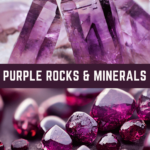In the vast geological tapestry of our planet, a captivating spectrum comes alive – a symphony of purple hues, resonating from the heart of the Earth’s crust. Purple, a color traditionally associated with royalty and mystique, paints itself into a plethora of stones, each flaunting a unique blend of shades, textures, and compositions.
From gemstones carrying an undeniable aura of opulence to fragile crystals showcasing their beauty, the realm of purple rocks and minerals is as diverse as it is enchanting.
In this article we’ll traverse this splendid spectrum, appreciating the geological artistry that has given birth to these mineral wonders
1. Amethyst
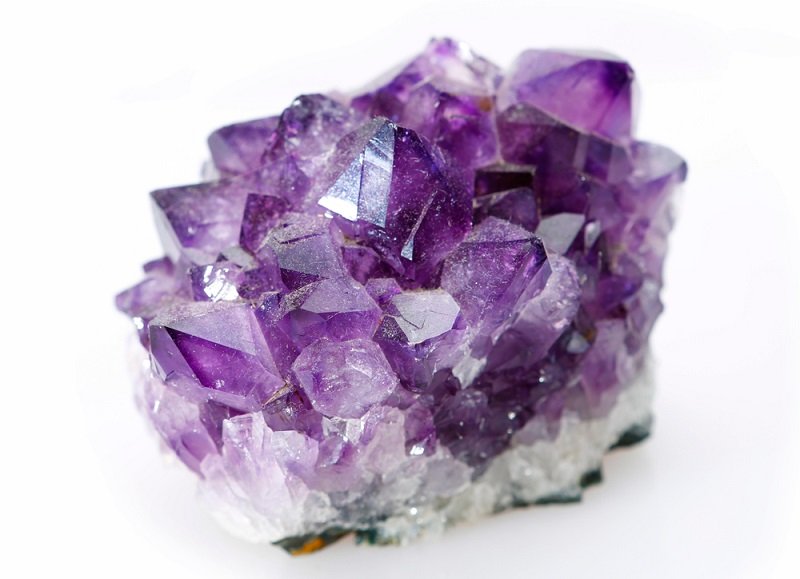
Amethyst is an iron-infused variety of quartz that displays a wide range of purple colorations. These go from light lavender crystals to the deep purples of stones pulled from the tundra in Siberia. These stones have captured the mind for a long time.
Amethyst, in prior days, was considered the equal of the other classic gemstones. Placed right alongside stones such as ruby, sapphire, and diamond. Their rich, royal purple coloration and incredible rarity made them a fast favorite among those who could afford gemstones.
These days, it’s less valuable but far more available for collectors who lack a fortune backed in gold and caravels. The discovery of massive deposits in the basalt fields of Brazil has firmly cemented it as a semi-precious stone. While it’s a step down from its previous high status, the stone itself remains as beautiful as ever and can be found with almost every supplier of gemstones, rocks, and minerals!
2. Sugilite
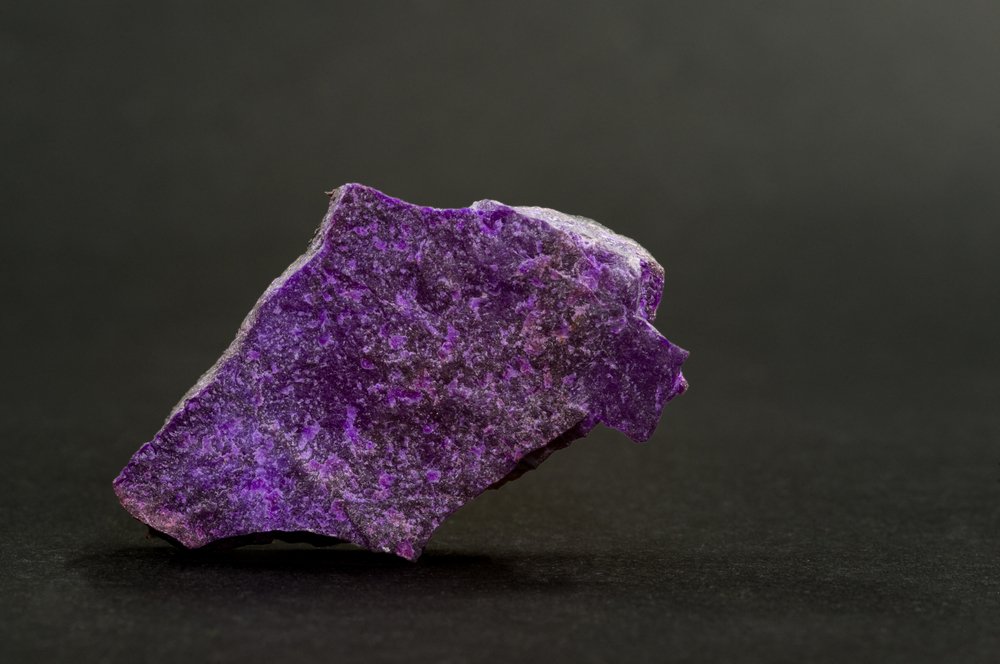
A new addition to the world of gemstones, sugilite is an extremely rare silicate mineral that’s found in only a couple of places in the world. Its rich purple coloration and mottled appearance are attractive, and the rarity of the stone has created a serious market for it with sky-high prices.
Sugilite is a relatively new discovery, having first been found in Japan in 1944. Since then a few larger deposits have been found, most famously in the manganese fields of South Africa. The stone is colored by manganese, and its association is primarily with ores of the mineral.
Sugilite is expensive in any grade, but the highest grades may as well be called priceless. Transparent sugilite is found in such small quantities that sellers can ask absurd prices for it, the gems themselves have a “jelly” look like fire opal with a deep purple hue. It’s a wonderful stone, but not an easy one to acquire for the casual mineral collector.
3. Charoite
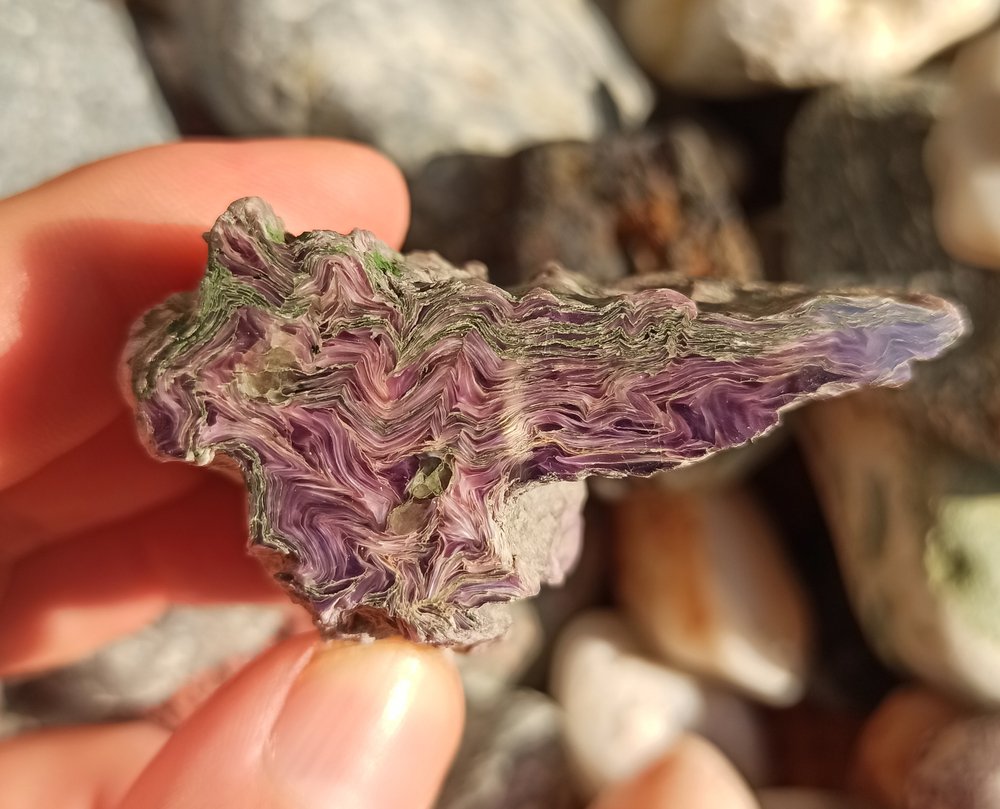
Charoite, a stone so deeply colored and recently found that the immediate reaction of the market was to think it was dyed. This rock bears deep purple colors and swirls that creates a unique surface finish when polished best described as marbled. Charoite is a rare stone, reported only from one region of Siberia.
Charoite is sometimes chatoyant, displaying the same curious effect that can be found with Tiger’s Eye. Unlike sugilite, charoite remains at a decent price and it can be found in massive formations suitable for larger decorative objects in addition to being used in the creation of cabochons and display items.
Despite its high hardness, charoite needs to be well protected when used in jewelry. This is probably a factor in its low cost, but it’s one that can be taken advantage of by collectors who are fond of the color purple. The stone is readily available and often sold for just a few dollars per carat regardless of grade.
4. Fluorite
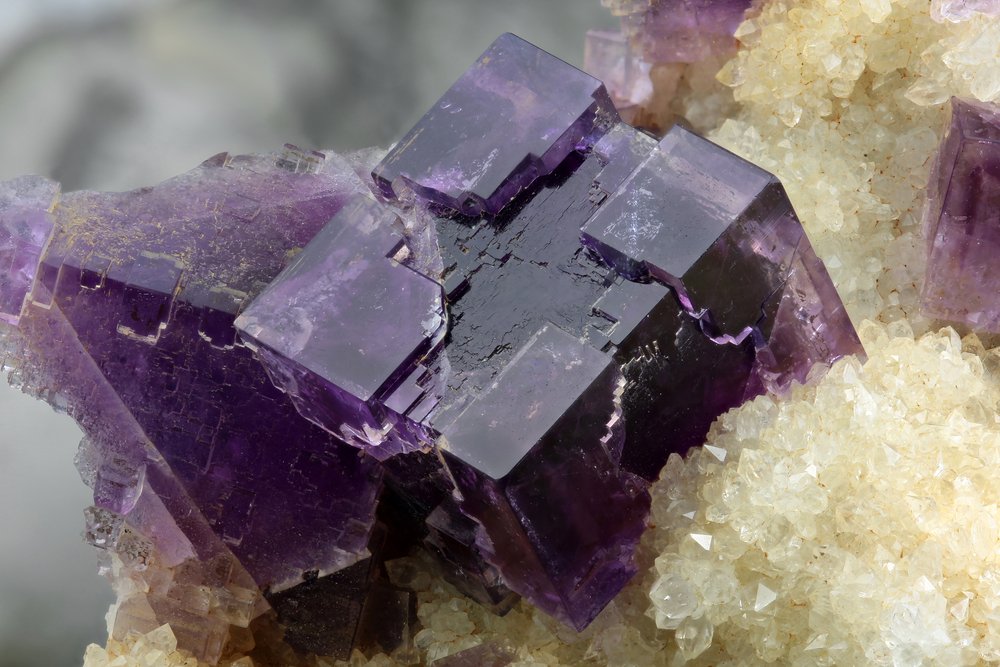
Fluorite comes in many colors, but the most popular seen in the rock trade is rainbow fluorite. This stone bears a deep purple and light green color, often in separated bands, and it’s what is immediately called to mind for many when they hear the word.
Fluorite is a soft mineral, easy to carve but not suitable for jewelry. The inside of fluorite is often a fantastic blend of internal fractures creating rainbows, interesting inclusions, and a depth that’s almost felt when the surface is done properly. It’s also dirt cheap, even at the highest grade, and readily available in all of the popular forms used for collectible stones.
While fluorite may not be the fanciest or rarest of the many purple minerals out there, it’s a mainstay in collections across the world. For extra fun, you can even find large, high-grade, cut gemstones with a color-changing quality for far less than any equivalent stone. Just don’t try and stick them in a ring, fluorite is best admired on the shelf.
5. Rhodolite Garnet
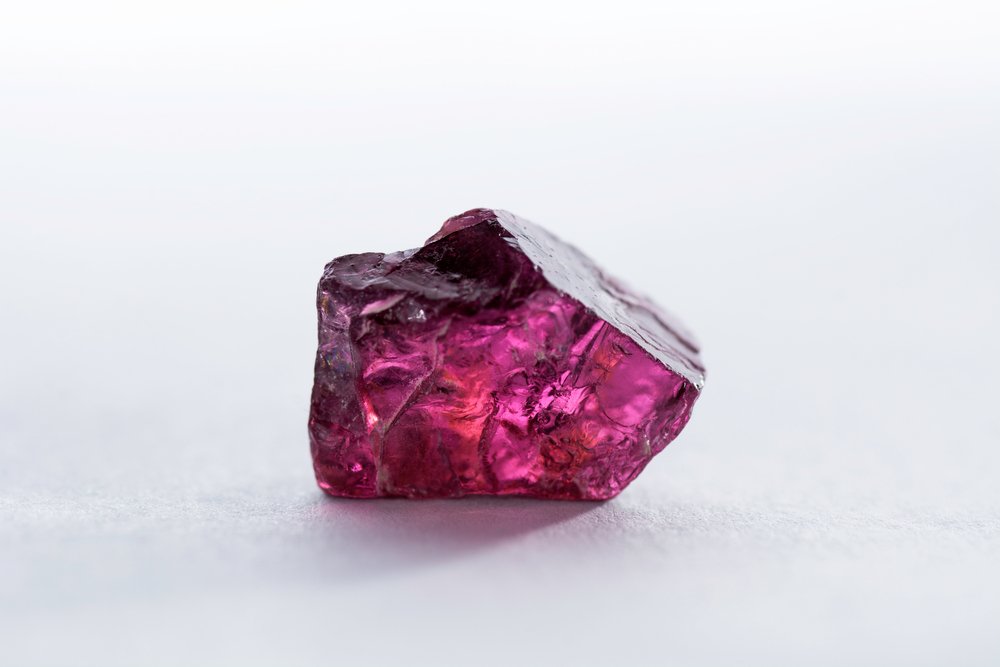
Garnets are an obsession for some, myself included. Of the various orange, red, and purple-ish varieties of this precious stone my personal favorite are rhodolite garnets. These deep purple-red gemstones have a way of capturing the eye and their slight shift from burgundy to deep purple depending on the light is entrancing.
Rhodolite garnets are a hybrid variety, consisting of almandine and pyrope garnet crystals packed into the same formation. They’re often overlooked as a choice in jewelry by most people. Garnet, after all, is mainly considered a red stone with the possible inclusions of green tsavorite and demantoid garnets known. Rhodolite’s purple is an anomaly in a gemstone that already shows a wide variety of colors.
Rhodolite garnets aren’t cheap but they’re not prohibitively expensive either. They’re widely available in both crystal and cut form for those who are interested in them. While a bit on the red side of things, once held up to the light it’s hard to figure out why they aren’t held in the same esteem as other purple gemstones.
6. Alexandrite
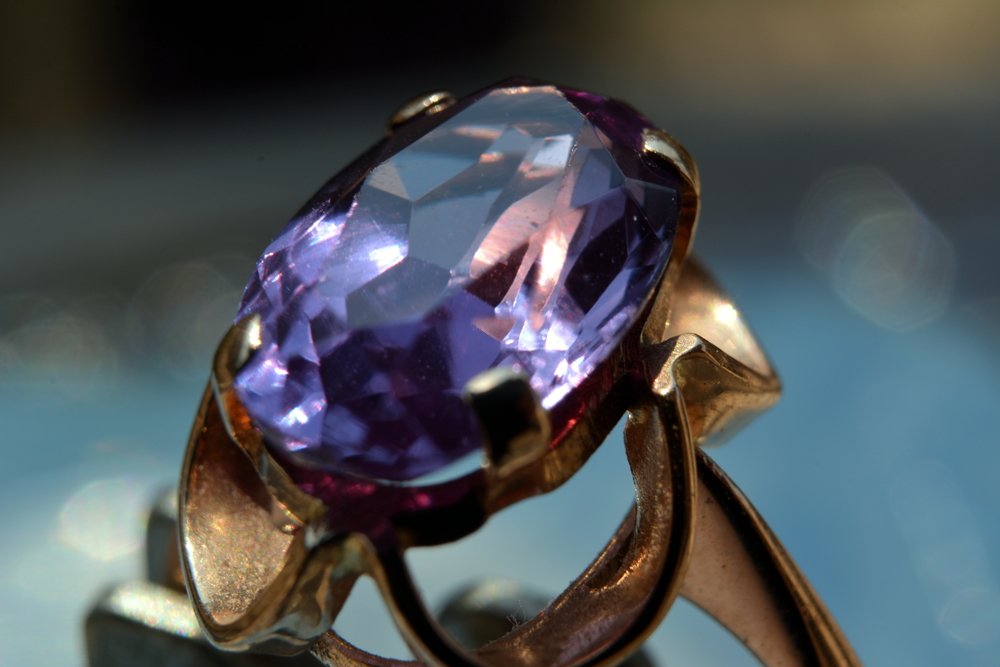
Alexandrite is one of the most expensive gemstones in the world, and it owes largely to the fact that it changes color depending on the light. Alexandrite’s deep purple in incandescent light is just part of the fascinating nature of the stone, which is a teal color when sunlight falls directly on it.
Alexandrite is prohibitively expensive, coming in at thousands of dollars per carat. The stone is extremely rare, being a scant variant of the already rare chrysoberyl. It’s perhaps the highest regarded of the stones not grouped in with the classic precious stones, and its cost puts most of them in the rearview mirror.
While natural alexandrite is vanishingly rare, you can find simulants on the market for a decent price. These are usually corundum laced with vanadium or some form of color-changing spinel, not actual chrysoberyl. Still, the color-changing properties of alexandrite have given it a high price and a legend of its own.
7. Grape Agate
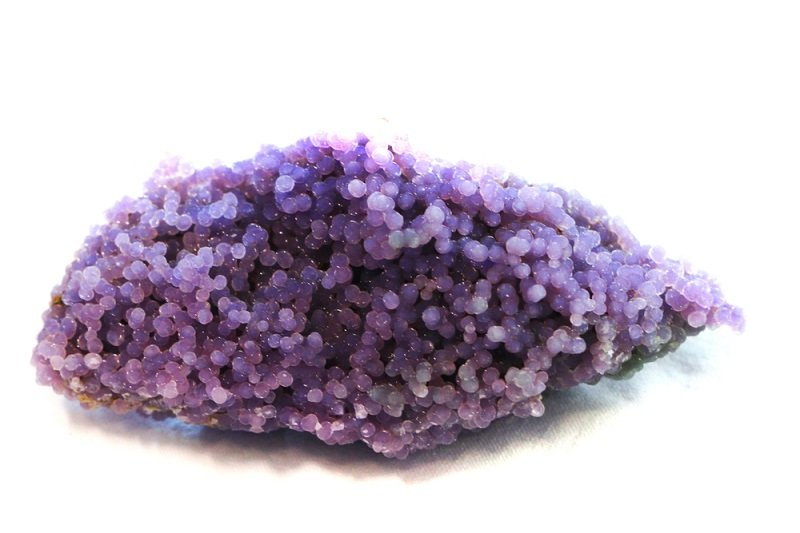
Grape agate is a strange stone. It displays one of the most prominent botryoidal formations found in nature, almost always comprised of small gloves interlocked into a mass that resembles a bunch of grapes. Newly discovered and highly valuable, the vast majority of the stone is purple but there are some green varieties out there.
Grape agate actually isn’t an agate. Or a chalcedony, for that matter. Instead, it’s comprised of spherical nodules of amethyst formed around seed crystals that interlink as they grow. The crystalline structure, in this case, is almost completely unrecognizable, unlike the crystal structure of amethyst which forms familiar hexagonal points.
Grape agate is rare and a bit pricey. The cost depends on the color, size, and definition of the sample in question. It’s become a rather common sight among rock and crystal dealers, and its certainly cemented its place in the rockhounding community with its unique form and attractive colors.
8. Taaffeite
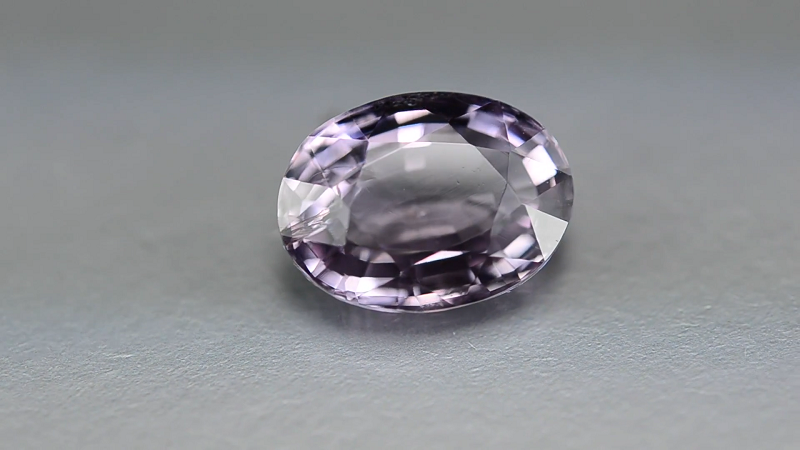
All stones have origin stories, and the story of Taaffeite is a great one. Taaffeite is the only stone known to have been initially identified as a cut gemstone, having been identified by a man named Richard Taafe who found that it had some discrepancies with the spinel material it was sold as.
Taaffeite occurs in many colors, but the highest-priced specimens are lavender and deep purple. The stone hasn’t taken off in the fine jewelry world, but it’s well known by collectors and those who try to invest in gemstones. Samples are vanishingly rare, and anything that looks affordable is most likely a fake of one variety or another.
It’s found in Sri Lanka and Myanmar in very small quantities. While all precious stones are rare in nature, Taaffeite holds the distinction of being one of the few gemstones where you simply may not be able to find it. High-grade stones often sell as soon as they’re listed, and the few lower-grade stones around inevitably seem to be found by those willing to pay a serious premium just to own something so rare.
9. Kammererite
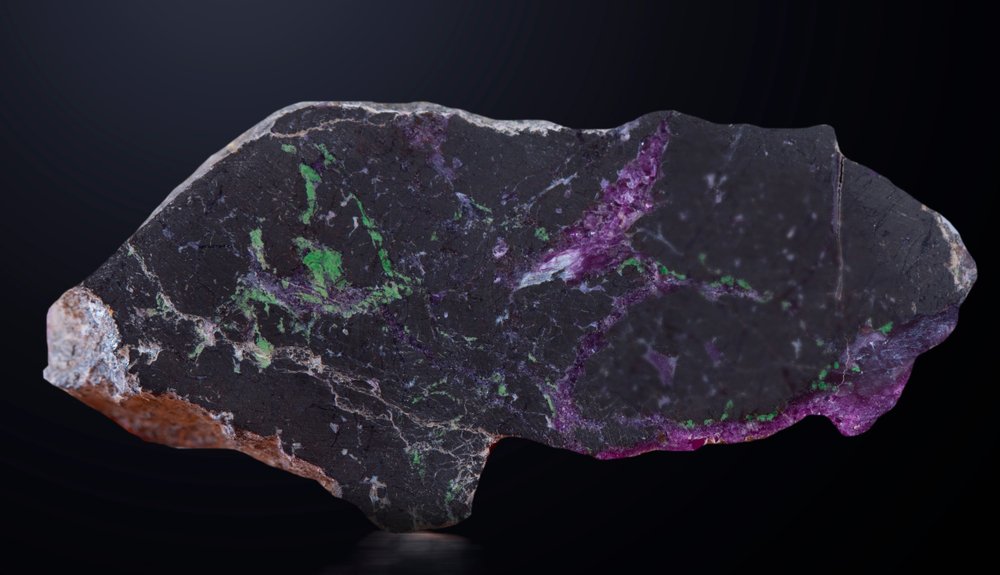
A little-known, extremely soft mineral, Kammererite is found in Italy. The mineral is mainly found as densely packed formations of crystals. They resemble high-grade amethyst superficially, but the similarities pretty much stop there.
Kammererite is very soft, coming in at only 2-2.5 on the Moh’s scale. It’s also micaceous, meaning that small sheets of it flake readily from the main body when the stone is disturbed. In spite or perhaps because, of that reason, some extremely skilled cutters have still managed to facet the stone. If they could be found (and that’s a quest of its own) they’d still be unsuitable for jewelry but it’s proof that gem cutters often have outsized levels of persistence.
For most, a simple specimen sitting on the shelf is enough. The mineral is deeply beautiful, with larger pieces being cut en cabochon. The latter often resemble Chevron Amethyst, with a white and purple banded appearance. It’s a “look, don’t wear” mineral, but it’s still a collector favorite and readily available in the rock trade.
10. Lepidolite
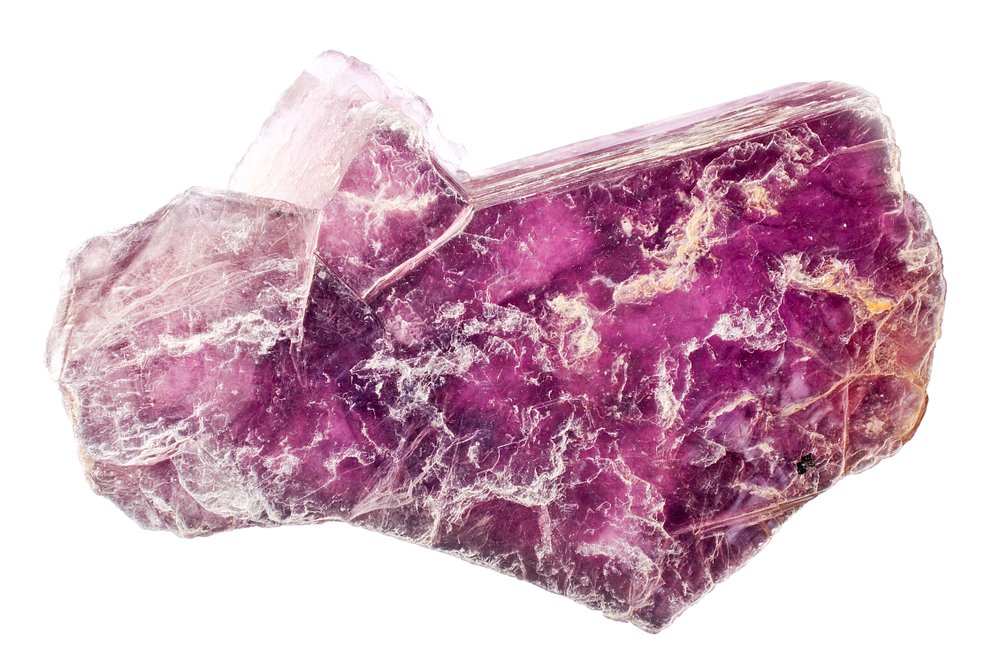
Lepidolite is mainly known for being an ore for the rare earth metals rubidium and lithium, but it’s formed as a lilac-to-light purple colored stone and it has found its own place in the stone trade. It’s a bit lesser-known and less regarded compared to some of the more dramatic stones out there but tumbles and cabs can be quite attractive.
The main draw of lepidolite is undoubtedly for serious mineral collectors. It’s found in close association with other lithium ores and has a few variations of how it’s formed. Some of the coolest are lepidolite mica, which is a flaky, layered form of crystallized lepidolite. These layers sometimes occur in large curves instead of simply on flat surfaces as well.
This flaky mineral’s rare earth metal content makes it even more fascinating. These compounds are used heavily in the electronics we rely on in the modern world. Having a bit on the shelf certainly doesn’t hurt, especially if it’s a unique, mixed-mineral specimen.
11. Indigo Gabbro
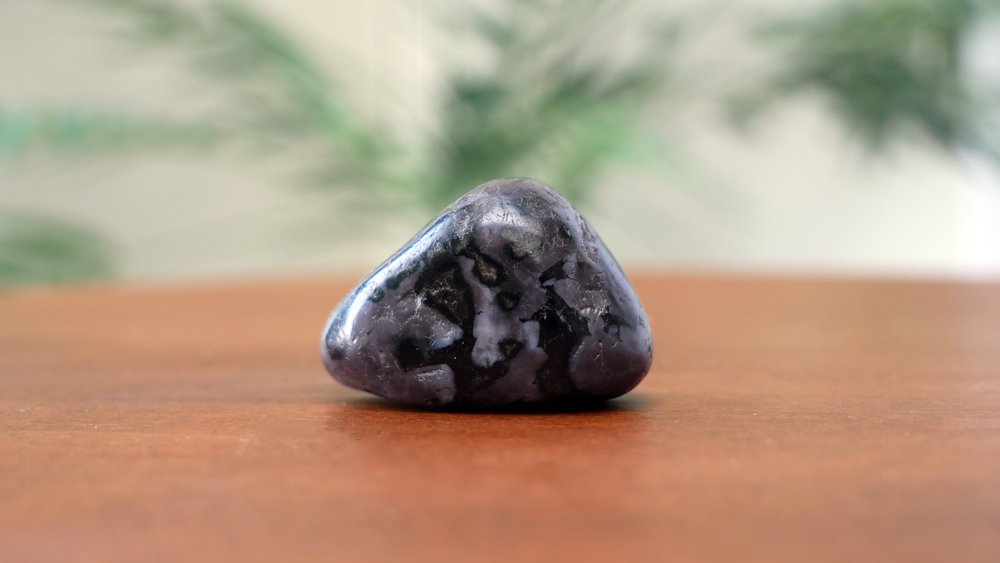
I must confess a weakness for Indigo Gabbro. As a lapidary material, it’s well suited for carving, attractive, and dirt cheap. The conglomerate is made up of grains of material that range from deep purple-blue to a light lavender color, all intermixed with grains of black material. The end result is stunning, the stone really doesn’t receive enough credit.
Indigo Gabbro hails from Madagascar, where it can be found in massive amounts. The stone is sometimes intermixed with tiny amounts of other minerals as well. Pyrite is a common find in many lots, adding small gold flecks to the impressive dalmatian spotting of the stone.
Indigo Gabbro is often sold as Mystical Merlinite at a huge premium. If you can avoid that pitfall, it remains an attractive and unique mineral specimen. Due to its extraction from large formations, it’s also cheap. That makes it a perfect stone to have on hand for newbie stone carvers.
12. Tiffany Stone (Bertrandite)
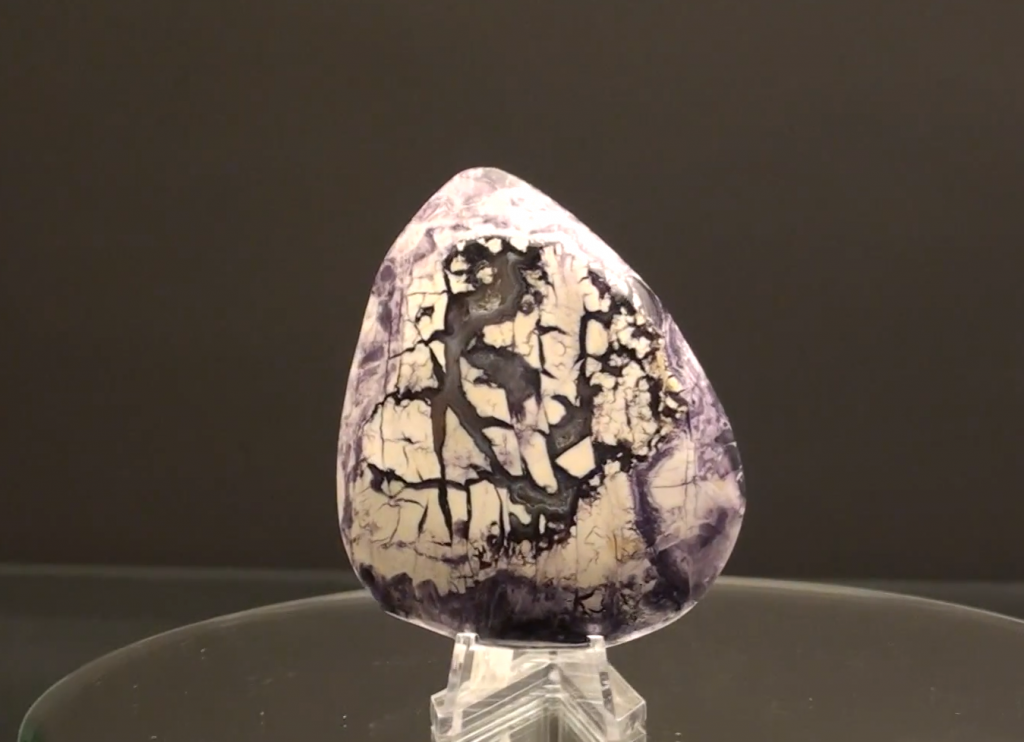
A rare mineral conglomerate, Tiffany Stone is an incredible rock that is formed with a striking purple and white surface. The purple is fluorite, while the white is common opal, which means that Tiffany Stone is actually opal fluorite.
The name appears to be from the prospector (or rather their daughter) who found it rather than the Tiffany company. The latter association sprang up as a comparison of the rich purple fluorite in Tiffany Stone compared to the works of purple glass produced by the company.
Tiffany Stone is often expensive and it’s in high demand, but the price depends entirely on the individual stone, slab, or cab. Those with rarer or more vibrant colors, such as the pink-orange in some samples, are more valuable and sought after. The varied appearance seems to just add even more weight to the following behind the stone since each is admired for its own properties.
13. Purpurite
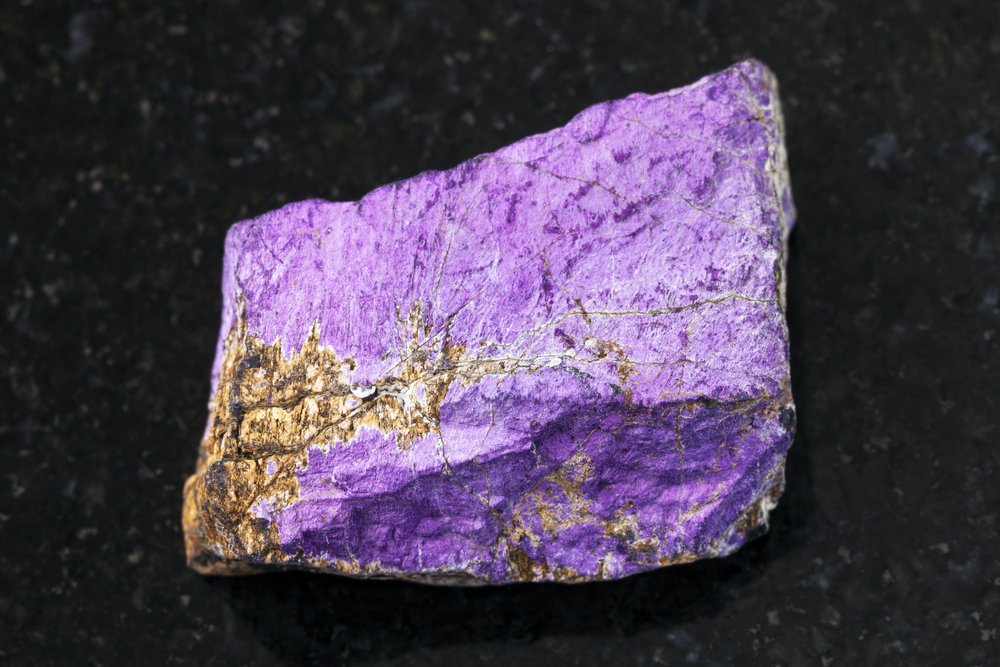
A manganese iron phosphate with deep purple coloration, purpurite is striking even among the beautiful purple stones we’ve already discussed. The best-known examples come from Namibia, which produces a lot of high-grade purpurite for export into our markets.
Purpurite’s one downfall is its relatively low hardness. At 4-4.5 it’s a terrible choice for rings and it needs some special considerations if it’s going to be worn as a pendant. The stone itself cuts very well and takes a gleaming high polish, making attractive specimens. If sugilite is marbled, it’s perhaps best to call the appearance of purpurite grainy.
It’s not the most popular stone in the world, which is a huge bonus for collectors. The fact that it occurs in large masses, and its lack of suitability for jewelry, don’t matter at all for those who simply want a piece. Purpurite may be best enjoyed in its natural form: a complex stone with a purple so vivid that it can seem surreal in person.
- Online rock and mineral club for collectors of all levels!
- Find community with like-minded rock and mineral enthusiasts.
- Monthly Giveaways!
- Free Access to Entire Digital Library of Products (current and future products)*

